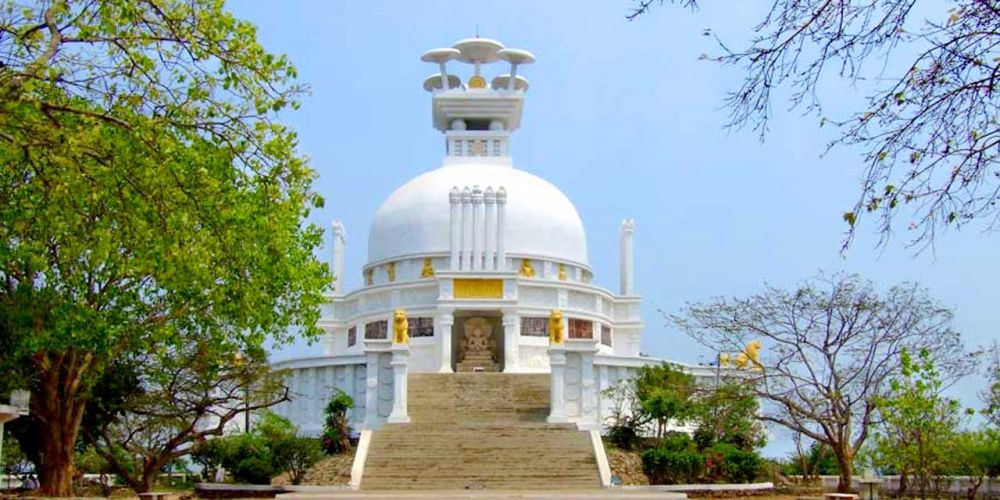

The Dhauli Shanti Stupa, located on the banks of the Daya River in Bhubaneswar, Odisha, is a symbol of peace and a historical monument that reflects the legacy of Buddhism in India. The site is considered significant as it is believed to be the place where Emperor Ashoka waged the Kalinga War in 262 B.C., which led to his transformation and adoption of Buddhism.
After witnessing the bloodshed of the Kalinga War, Ashoka embraced Buddhism and decided to spread the message of peace and non-violence. In remembrance of this important event, the Dhauli Shanti Stupa, also known as the Peace Pagoda, was built in 1972 by the Kalinga Nippon Buddha Sangha and the Japan Buddha Sangha. The pagoda is decorated with edicts of Ashoka and intricate carvings that depict the emperor's life after the war.
Over the years, the Dhauli Shanti Stupa has become an esteemed destination for pilgrims, history enthusiasts, and tourists from all over the world. The site also features the ancient rock edicts of Ashoka and has been developed into a serene place for visitors to reflect upon peace and brotherhood.
Tourism at Dhauli Shanti Stupa has seen a positive trend with the rise of cultural and heritage tourism. Travellers are becoming more interested in exploring historical sites and understanding the cultural significance behind them. In recent years, the Odisha government has been promoting the Buddhist circuit, which connects various Buddhist heritage sites, including Dhauli, to encourage more visitors.
While the number of tourists is growing, sustainable tourism practices are being implemented to ensure that the natural beauty and historical integrity of the site are preserved for future generations. This includes measures like proper management of waste, minimizing the carbon footprint of tourism, and educating visitors about the historical importance of the site.
The Dhauli Shanti Stupa stands not just as a monument but as a testament to the rich history of Odisha and the timeless teachings of peace. The tranquility of the site, coupled with its historical significance, makes it a must-visit destination for anyone traveling to eastern India.